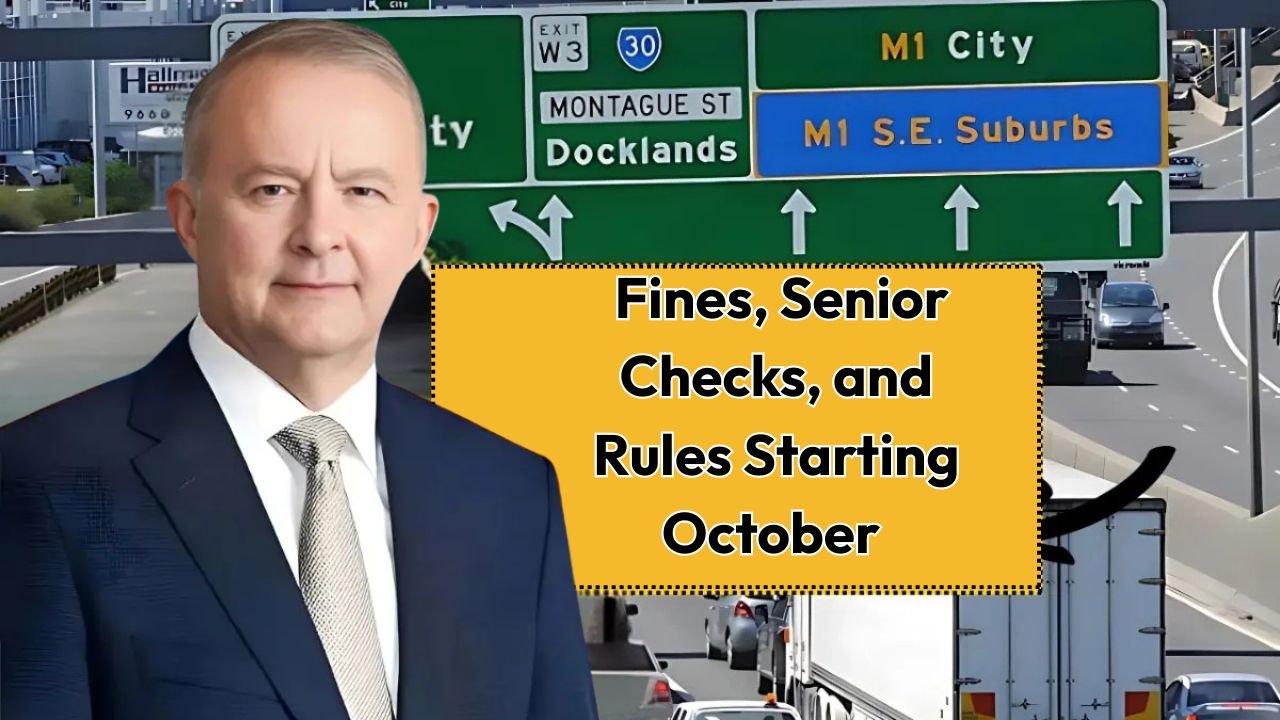Buckle up, Aussie drivers—major traffic law reforms kick in on October 1, 2025, aiming to slash road deaths amid a 2.9% spike in fatalities from 2024. From stiffer penalties for drink-driving to mandatory health checks for seniors and phone bans, these changes prioritize safety across all states. With 119 road deaths in July 2025 alone (up 17% from prior years), ignoring them could cost you your license or thousands in fines.
Here’s what every motorist needs to know about the 2025 Australian driving laws, including penalties and prep tips.
Why These Reforms Are Happening Now
Road tolls are climbing, with young and senior drivers involved in rising accidents. Governments are responding with nationwide updates to the Australian Road Rules, focusing on vulnerable groups and tech distractions. The goal? Cut injuries (65,189 per 100,000 in 2024) and deaths (1,425 per 100,000) by enforcing stricter standards. These changes build on July 2025 updates like reduced speed limits in school zones (now 30km/h from 40km/h) and 40km/h in neighborhoods (from 50km/h).
Key Driving Law Changes Effective October 1, 2025
The reforms target high-risk behaviors with zero tolerance. Here’s the rundown:
1. Harsher Penalties for Drink and Drug Driving
- Repeat Offenders: First offense? Expect fines up to $3,000 and 6-month license suspension. Third strike? Permanent ban possible.
- Zero BAC for P-Platers: Provisional drivers face immediate suspension and $1,500 fines for any alcohol.
- Roadside Testing: Random drug tests double, with 4 demerit points for positives.
2. Stricter Speed Limits and Enforcement
- School Zones: 30km/h max, with double fines ($600+) during hours.
- Holiday Doubles: Penalties for speeding jump 100% on long weekends.
- AI Cameras: Real-time monitoring for excessive speeding (over 20km/h), issuing $500–$1,000 fines on the spot.
3. Senior Driver Health Checks
- Age 70+: Mandatory medical exams every 1–3 years to renew licenses, assessing vision, cognition, and mobility.
- Tailored Conditions: Restricted to daylight or automatic vehicles if needed; failure means suspension.
- No Blanket Ban: Focus on fitness, not age—doctors clear 85% of applicants.
4. Seat Belts and Child Restraints
- Uniform Standards: All states adopt national rules for boosters up to 145cm tall.
- Fines: $300–$500 for non-compliance, plus 3 demerit points; rear-facing seats mandatory until age 2.
5. Mobile Phone and Distraction Crackdowns
- Hands-Free Ban: Even mounted phones count as distractions if you touch them—$600 fine, 4 points.
- Coffee While Driving: Classified as distraction; $1,234 fine in some states for eating/drinking impairing control.
Penalty Breakdown by Offense
| Offense | Fine | Demerit Points | License Impact |
|---|---|---|---|
| Drink/Drug Driving (1st) | $1,500–$3,000 | 4–6 | 6-month suspension |
| Speeding (10–20km/h over) | $200–$600 | 1–3 | Warning; repeat = suspension |
| Phone Use | $600 | 4 | Immediate suspension (P/L) |
| Child Restraint Violation | $300–$500 | 3 | Vehicle defect notice |
| Senior License Renewal Fail | N/A | N/A | Temporary/permanent ban |
Fines double in school zones or holidays; court cases can triple them.
Special Rules for Seniors and New Drivers
- Seniors (70+): Biennial doctor visits; practical tests if flagged. 75% pass, but 20% get conditions like no night driving.
- L/P-Platers: Zero alcohol, no passengers under 21 (midnight–5am), and stricter phone bans.
- Overseas Drivers: 3-month grace period, then full compliance or license conversion.
These target the 25% of crashes involving seniors or novices in 2024.
Vehicle and Tech Standards
- Emergency Vehicle Priority: 40km/h speed limit when passing flashing lights; $500 fine for non-compliance.
- Load Restraint: New standards for cargo; $235–$375 fines for light/heavy vehicles.
- Tech Enforcement: AI cameras detect phone use and speeding; 30km/h zones expand to high-pedestrian areas.
How to Prepare Before October 1
- Review Your License: Seniors, book a medical check; P-platers, update conditions.
- Vehicle Inspection: Ensure seats, belts, and loads comply—free checks at VicRoads/Transport NSW.
- Download Apps: Use state road authority apps for real-time alerts on zones and cameras.
- Drive Defensively: Slow in schools, hands-free only, and plan routes to avoid fines.
Stay informed via official sites like Transport for NSW or VicRoads.
Final Thoughts
The October 1, 2025, traffic law reforms are a wake-up call for safer Australian roads, with doubled fines, senior checks, and tech crackdowns leading the charge. While penalties sting ($50–$3,200), they’re designed to save lives amid rising fatalities. Review your habits now, get compliant, and drive responsibly—your license (and everyone else’s safety) depends on it.
FAQs About Australia’s 2025 Traffic Law Reforms
When do the new traffic laws start in Australia?
From October 1, 2025, nationwide, covering penalties, senior checks, and vehicle standards.
What are the new rules for senior drivers?
Drivers 70+ need medical exams every 1–3 years; failure can lead to suspensions or conditions like no night driving.
How have penalties changed?
Fines double for speeding/drink-driving in school zones/holidays; phone use now $600 + 4 points.
Do P-platers face stricter rules?
Yes—zero alcohol tolerance, no under-21 passengers (midnight–5am), and immediate suspensions for phones.
What about child restraints?
National standards require rear-facing until age 2, boosters to 145cm; $300–$500 fines for violations.
How do I prepare for these changes?
Book medical checks if 70+, inspect your vehicle, and use state apps for zone alerts.




